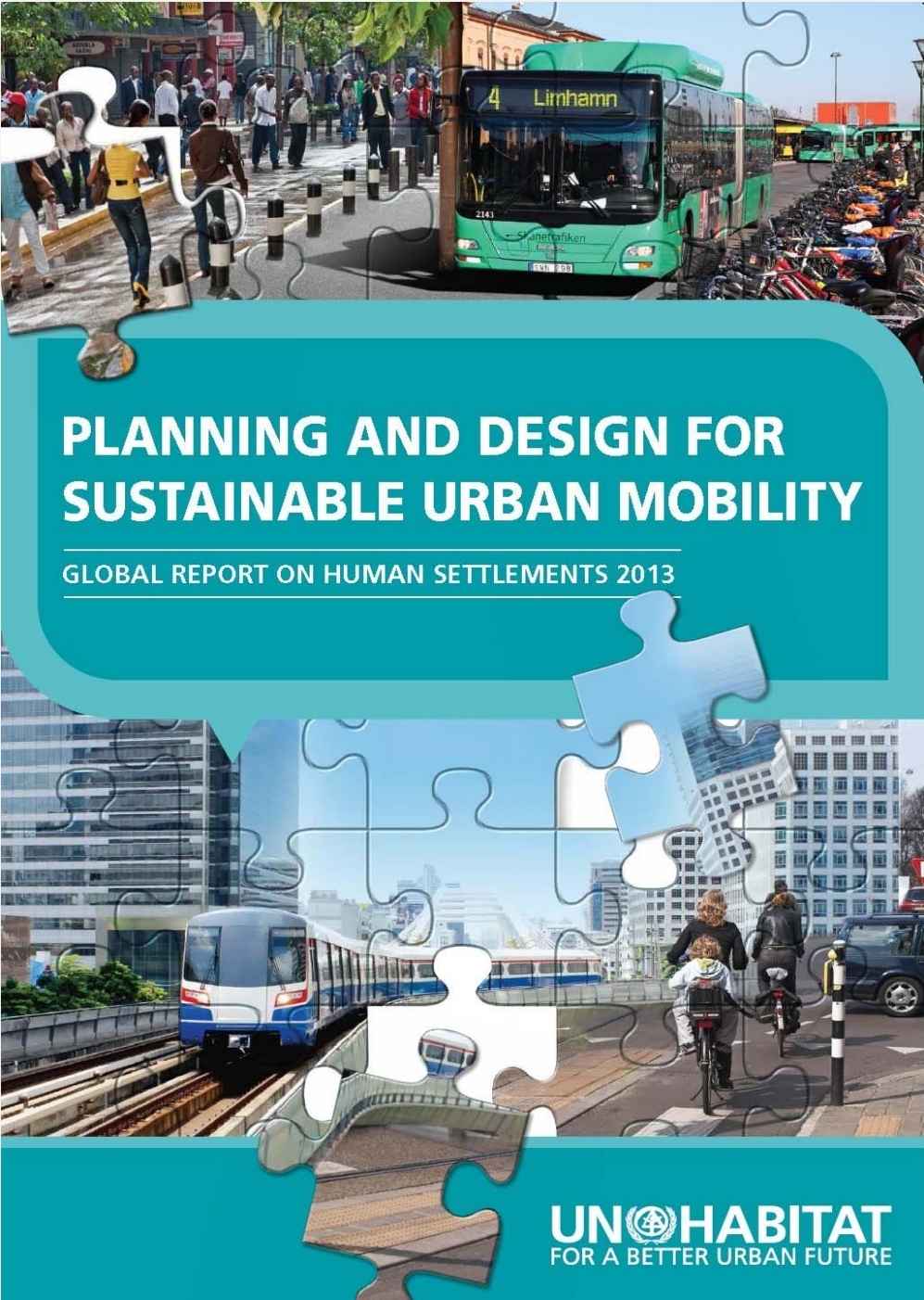Planning And Design Or Sustainable Urban Mobility
Hyper-mobility – the notion that more travel at Faster speeds covering longer distances generates greater economic prosperity – seems to be a distinguishing feature of urban areas, where more than half of the world’s population currently reside. By 2005, approximately 7.5 billion trips were made each dayin cities worldwide.1 In 2050, there may be three tofour times as many passenger-kilometres travelled asin the year 2000, infra struc ture and energy pricespermitting.2 Freight movement could also rise morethan threefold during the same period.3 Mobility
flows have become a key dynamic of urbanization,with the associated infra struc ture invariably constituting the backbone of urban form. Yet, despite theincreasing level of urban mobility worldwide, accessto places, activities and services has become increasingly difficult. Not only is it less convenient in terms of time, cost and comfort – to access locations in cities, but the very process of moving aroundin cities generates a number of negative externalities.
Accordingly, many of the world’s cities face an un prece dented accessibility crisis, and are charac terizedby unsus tain able mobility systems.
This report examines the state of urban mobilityin different parts of the world. It explores the link ages between urban form and mobility systems, with a viewto determining the essential conditions for promoting
the sustain able movement of people and goods inurban settings. This introductory chapter reviews keyissues and concerns of urban mobility and providesa framework for the content of the rest of the report. It outlines devel op ment trends impacting on urbanmobility and then discusses urban mobility issues ofthe twenty-first century, including the challenges offostering sus tain able mobility. Current urbanization patterns are causing un precedented challenges to urban mobility systems,particularly in devel op ing countries. While theseareas accounted for less than 40 per cent of the globalpopulation growth in the early 1970s, this share hasnow increased to 86 per cent, and is projected toincrease to more than 100 per cent within the next 15 years, as the world’s rural population starts tocontract. What is perhaps even more striking is theregional patterns of urban population growth. Figure1.1 shows how an increasing share of this growth isprojected to occur in Africa (19 per cent of totalannual growth today, compared to 43 per cent in 2045), while the combined annual urban population increase in developed countries, China, LatinAmerica and the Caribbean is projected to decreasefrom 46 per cent of the total today to 11 per centin 2045. Thus, it is the world’s poorest regions thatwill experi ence the greatest urban population
increase. These are the regions that will face thegreatest challenges in terms of coping with increasingdemands for improved trans port infra struc ture. Infact, projections indicate that Africa will account forless than 5 per cent of the global investments in trans -port infra struc ture during the next few decades (seeTable 8.2).
A major point of departure for this report is thatsustain able mobility extends beyond technicalities of increasing speed and improving the effectiveness and efficiency of trans port systems, to include demand-oriented measures (e.g. promoting walkingand cycling, and reducing the need to travel), withthe latter representing a pivotal factor in achievingrelevant progress. It suggests that the prevailing challenges of urban mobility are consequences of the preoccupation with the means of mobility rather thanits end – which is the realization of accessibility.
This first chapter of the report starts with a discussion of the need to focus on access as the basisfor urban mobility planning. It urges urban planners and decision-makers to move away from a ‘trans portbias’ in urban mobility planning, towards a focus onthe human right to equitable access to opportunities.
This is followed by a brief analysis of global conditions and trends with respect to the urban movement of people and goods. The last part of the chapter provides a brief discussion of the social, environmental, economic and institutional dimensions of sustain ability in urban mobility systems
DOWNLOAD :- HERE
